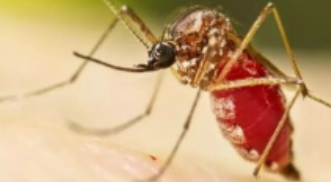“Combatting the Global Threat: Addressing the Spread of Mosquito-Borne Diseases in the Face of Climate Change”

Deadly diseases transmitted by mosquitoes are proliferating due to climatic changes induced by various factors such as global warming, deforestation, and urbanization. These environmental shifts create favorable conditions for mosquito breeding and the proliferation of disease-causing pathogens, posing significant threats to human health worldwide. Understanding the mechanisms driving the spread of mosquito-borne illnesses and implementing effective preventive measures are crucial in mitigating the impact of these diseases on vulnerable populations.
READ: OAS to Step in as Mediator in Guatemala’s Power Transition Crisis
Mosquito
Climate change plays a pivotal role in the expansion of mosquito habitats and the geographical range of vector-borne diseases. Rising temperatures, altered precipitation patterns, and increased humidity create conducive environments for mosquito breeding and survival. As temperatures warm, mosquitoes thrive in regions previously unsuitable for their proliferation, extending the transmission season of diseases such as malaria, dengue fever, Zika virus, and chikungunya.
Deforestation and urbanization further exacerbate the spread of mosquito-borne diseases by altering ecosystems and creating new habitats for mosquitoes to breed. Deforested areas provide suitable breeding grounds for mosquitoes by altering local microclimates and increasing access to standing water, a crucial breeding site for many mosquito species. Similarly, rapid urbanization leads to the proliferation of artificial water containers, inadequate sanitation infrastructure, and overcrowded living conditions, facilitating mosquito breeding and disease transmission in urban areas.
The interplay between climate change, deforestation, and urbanization amplifies the transmission of mosquito-borne diseases, posing significant challenges to public health systems worldwide. Vulnerable populations, including low-income communities, marginalized groups, and regions with limited access to healthcare resources, are disproportionately affected by the burden of these diseases.
To address the escalating threat of mosquito-borne diseases, comprehensive strategies encompassing environmental management, vector control measures, and public health interventions are essential. Implementing mosquito control measures such as insecticide spraying, larval habitat reduction, and the use of mosquito nets can help reduce mosquito populations and minimize disease transmission. Additionally, promoting community engagement, public awareness campaigns, and education initiatives can empower individuals to take proactive measures to protect themselves from mosquito bites and prevent disease transmission.
Advances in technology and innovation have also facilitated the development of novel approaches to mosquito control and disease prevention. Genetic modification techniques, such as the release of genetically modified mosquitoes carrying sterile or self-limiting traits, show promise in suppressing populations and reducing disease transmission. Furthermore, the use of spatial mapping, remote sensing, and predictive modeling techniques enables the identification of high-risk areas for disease transmission, guiding targeted interventions and resource allocation efforts.
International collaboration and coordination are essential in addressing the global challenge posed by borne diseases. Enhancing surveillance systems, sharing data and information, and fostering partnerships between governments, research institutions, and non-governmental organizations are critical in monitoring disease trends, responding to outbreaks, and implementing effective control measures. Moreover, investing in research and development efforts to advance vaccine development, diagnostic tools, and treatment options can further strengthen our ability to combat -borne diseases.
In conclusion, the spread of deadly diseases carried by mosquitoes is a pressing global health issue exacerbated by climate change, deforestation, and urbanization. Addressing the complex interplay of environmental, social, and economic factors driving disease transmission requires coordinated efforts at the local, national, and international levels. By implementing comprehensive strategies that integrate environmental management, vector control measures, and public health interventions, we can mitigate the impact of mosquito-borne diseases and safeguard the health and well-being of communities worldwide.






